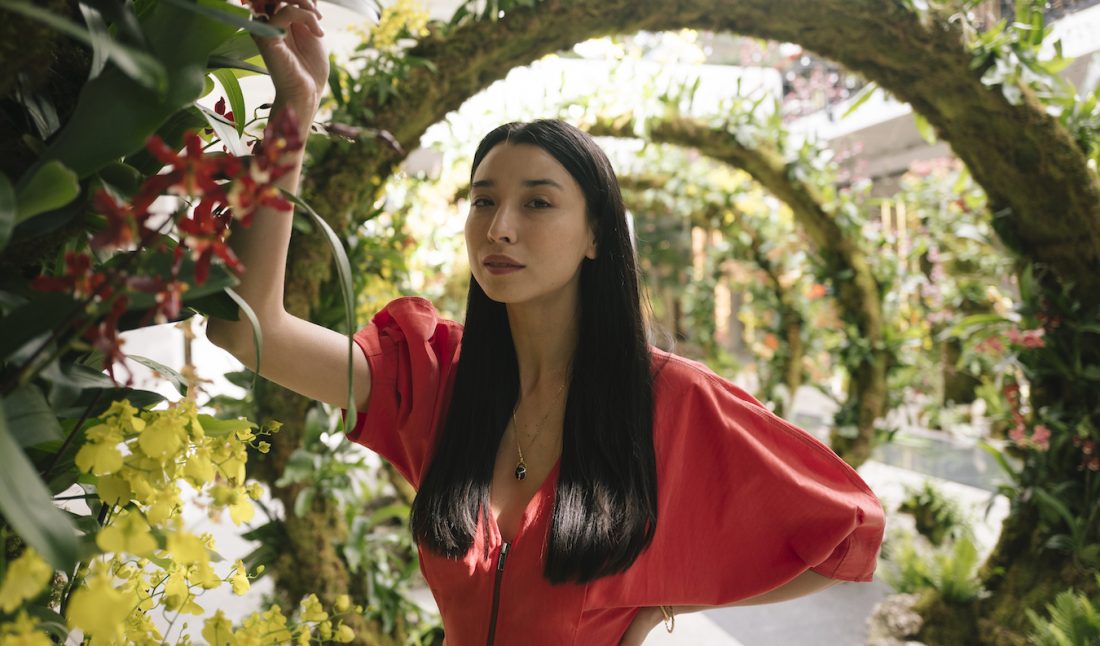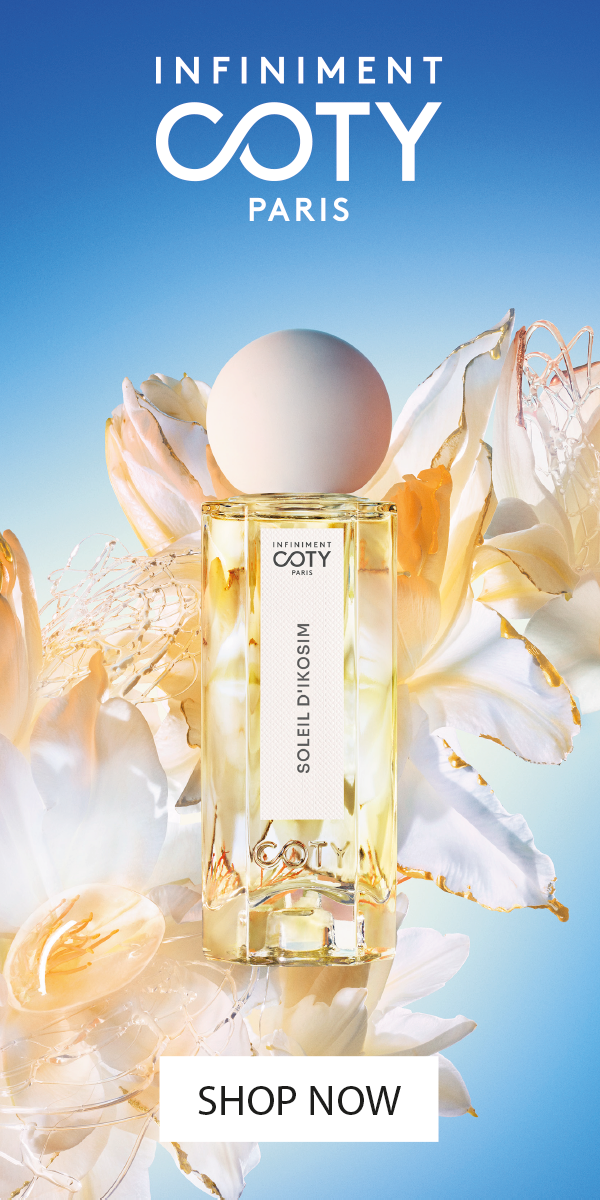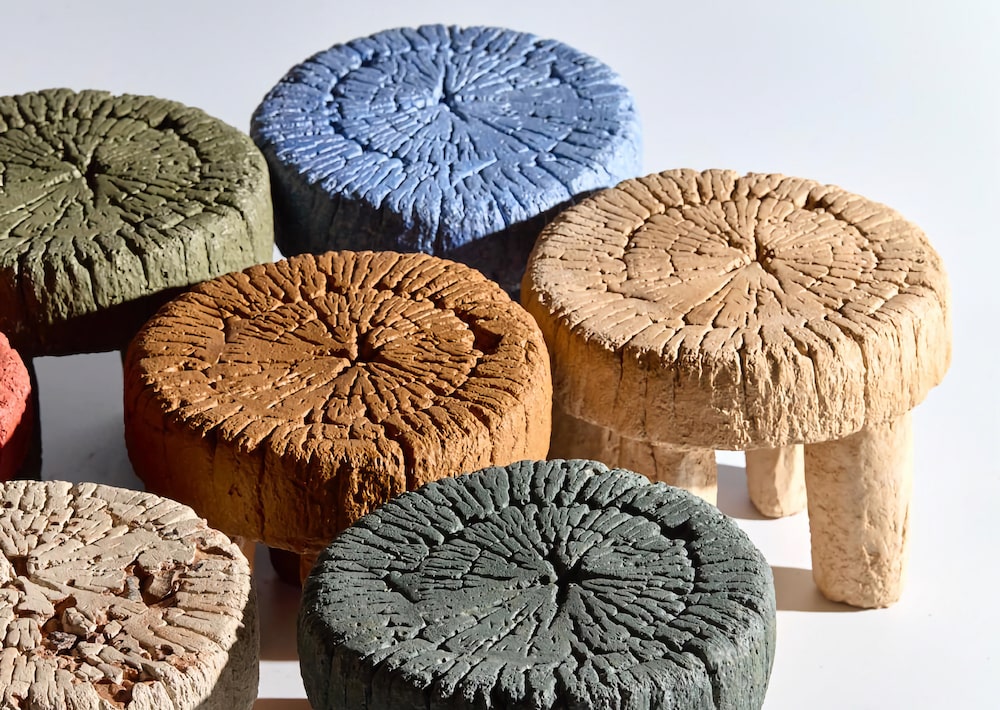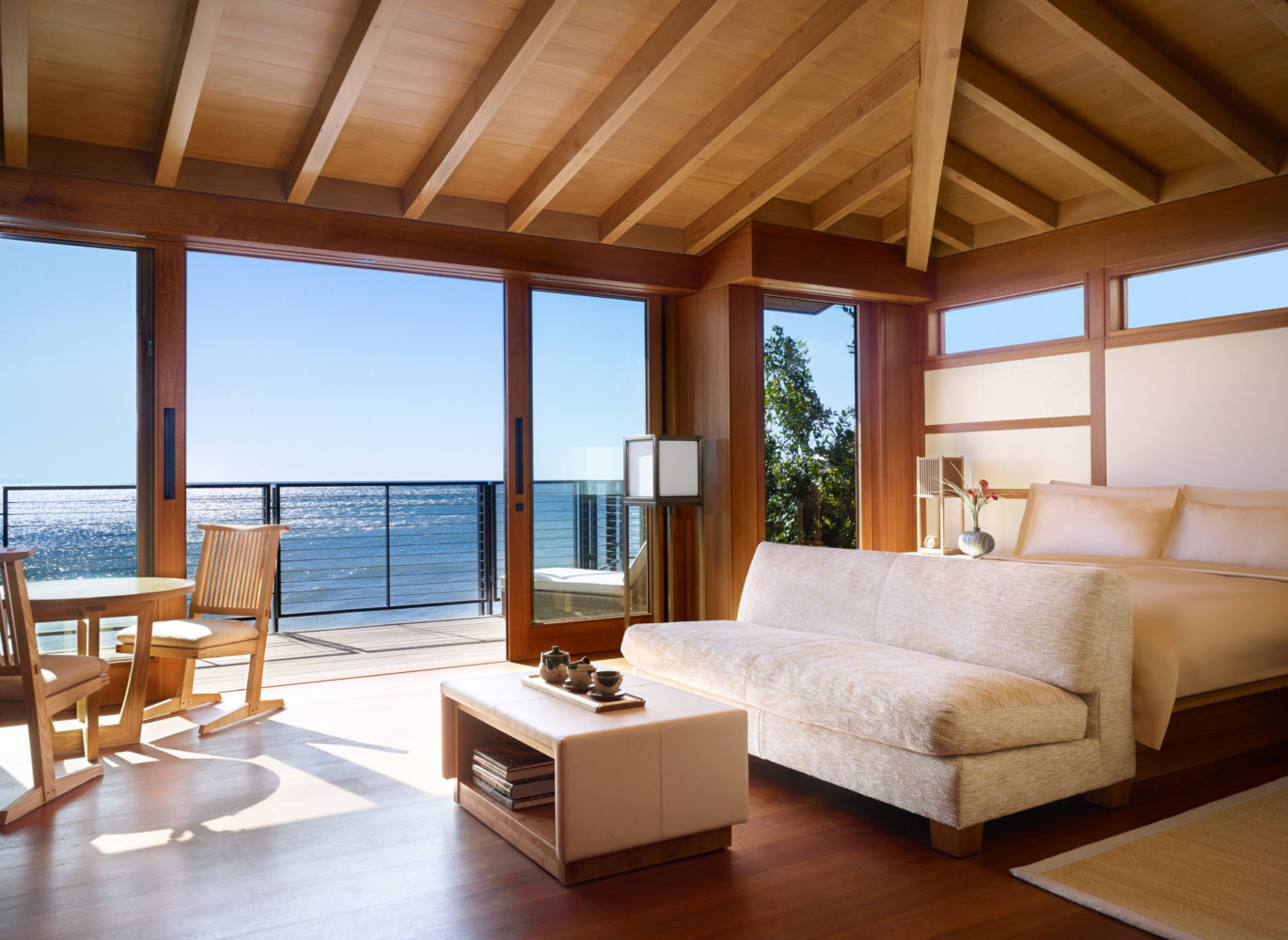Headlining the New York Botanical Garden
On February 14, the landscape artist Lily Kwong stood before an intimate crowd at the New York Botanical Garden (NYGB) to open her eponymous studio’s exhibition “The Orchid Show: Natural Heritage.” On view through April 23, it marked the institution’s 20th-anniversary “Orchid Show” presentation, hosted inside the landmark Enid A. Haupt Conservatory. It was a delightful homecoming for Kwong, as she was enrolled in the Garden’s landscape certificate program ahead of starting her own company just five years ago. Returning to the space also marked an important milestone for both her and the agricultural destination, as she became the first woman and person of color to ever take the helm of the anticipated exhibition.
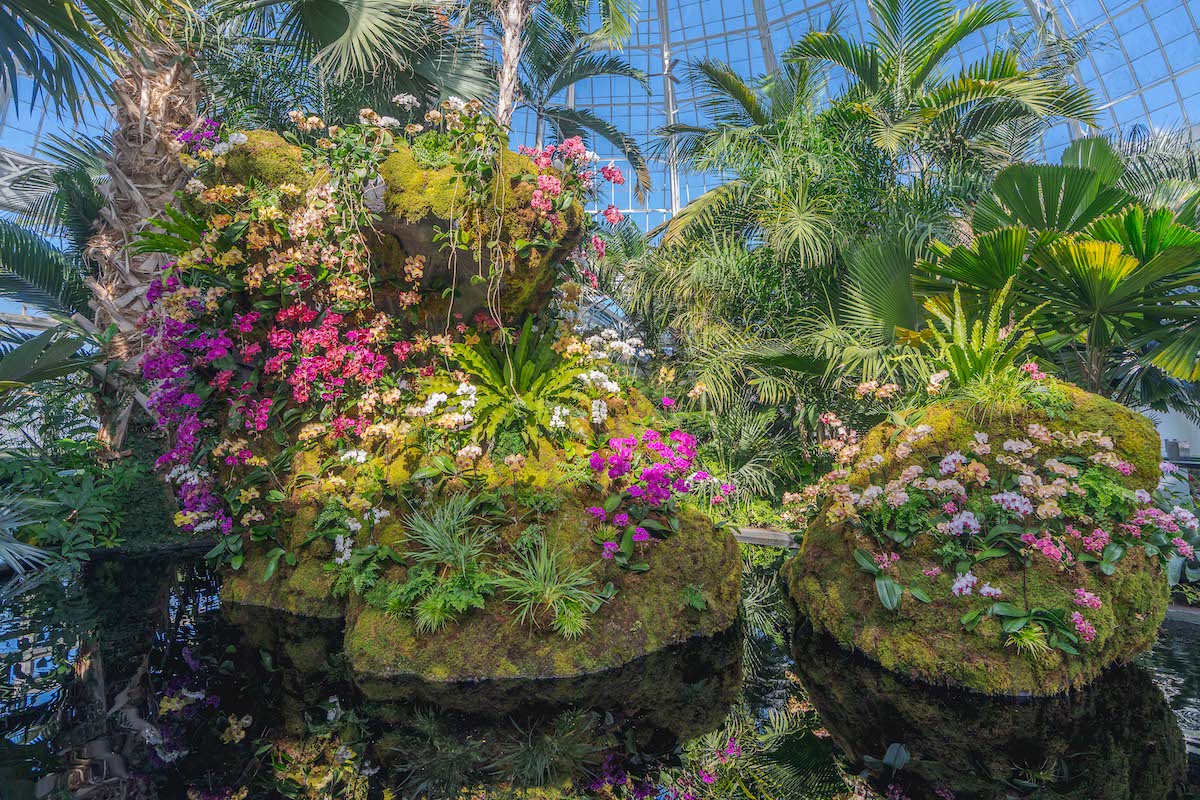 Installation view of “The Orchid Show: Natural Heritage,” courtesy of The New York Botanical Garden.
Installation view of “The Orchid Show: Natural Heritage,” courtesy of The New York Botanical Garden.
Inspired by these two identity markers, Kwong wanted to reflect on her family’s Chinese heritage, digging into the meaning, imagination, and power of their relationship with land. Heirloom scrolls of Kwong’s from Shanghai became key reference points, inspiring the show’s landscape design principles, water features, stonework, and rooms of towering physical formations that held 6,500 hand-hung orchids and hand-pinned moss. She hoped this ancestry-focused viewpoint would invoke the same curiosity in the show’s visitors, brewing interest in their lineage and ancestral relationship to the land. All rare orchid species in the show are native to Asia, and were sourced from NYBG’s horticulture team to act as carriers of cultural information—from Kwong’s family’s homeland in Shanghai to the Bronx.
Curious about blending ecology, imagination, and culture for “Natural Heritage,” Whitewall spoke with Kwong.
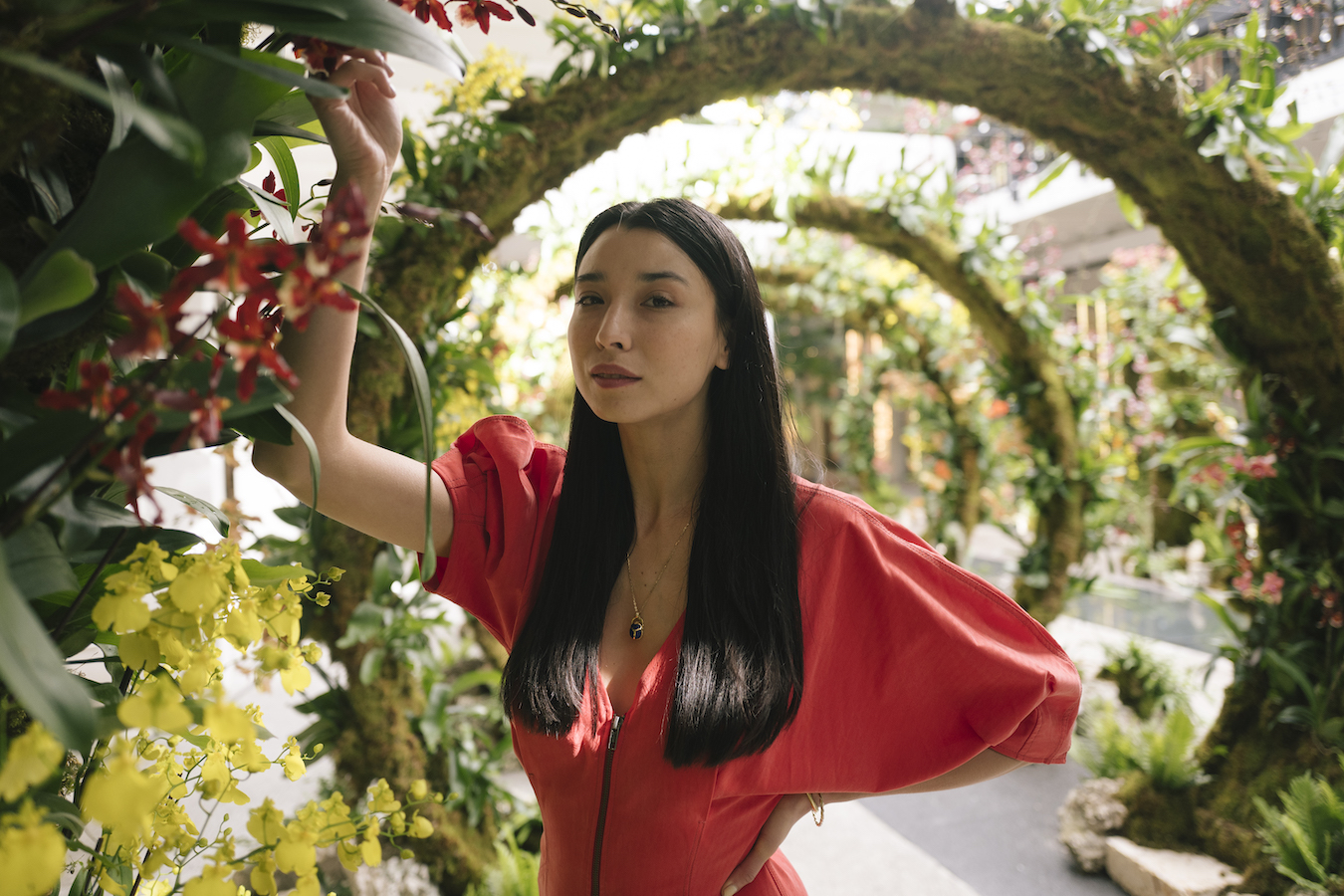 Portrait of Lily Kwong by Gesi Schilling.
Portrait of Lily Kwong by Gesi Schilling.
WHITEWALL: You’re the first woman and person of color to do this show in its 20-year history. Did you feel a responsibility to present something specific?
LILY KWONG: It felt like a call to action to step up. For people in the plant world, the New York Botanical Garden is a mausoleum of plant knowledge, research, and conservation, so it’s an iconic site for me. And that palm dome looms large in my world! I started my career taking classes at the New York Botanical Garden in their landscape certificate program as I was starting my company, so to be invited five to six years later to make a contribution at that scale, and to be the first in a couple categories, made me want to dig into those identity markers. When I found out that I was the first nonwhite guest designer, I wanted to dig into my Chinese heritage and tell a personal narrative that could be a universal story about reconnecting with our ancestry and ancient tradition around plants and plant life, looking at my personal history to build some of the concepts and themes in the show.
It also has been such a challenging few years for the Asian community in New York, so I wanted to do something that felt celebratory and inclusive, and create an opportunity to bridge a gap. It felt very meaningful to do that in this moment.
“It felt like a call to action to step up.”
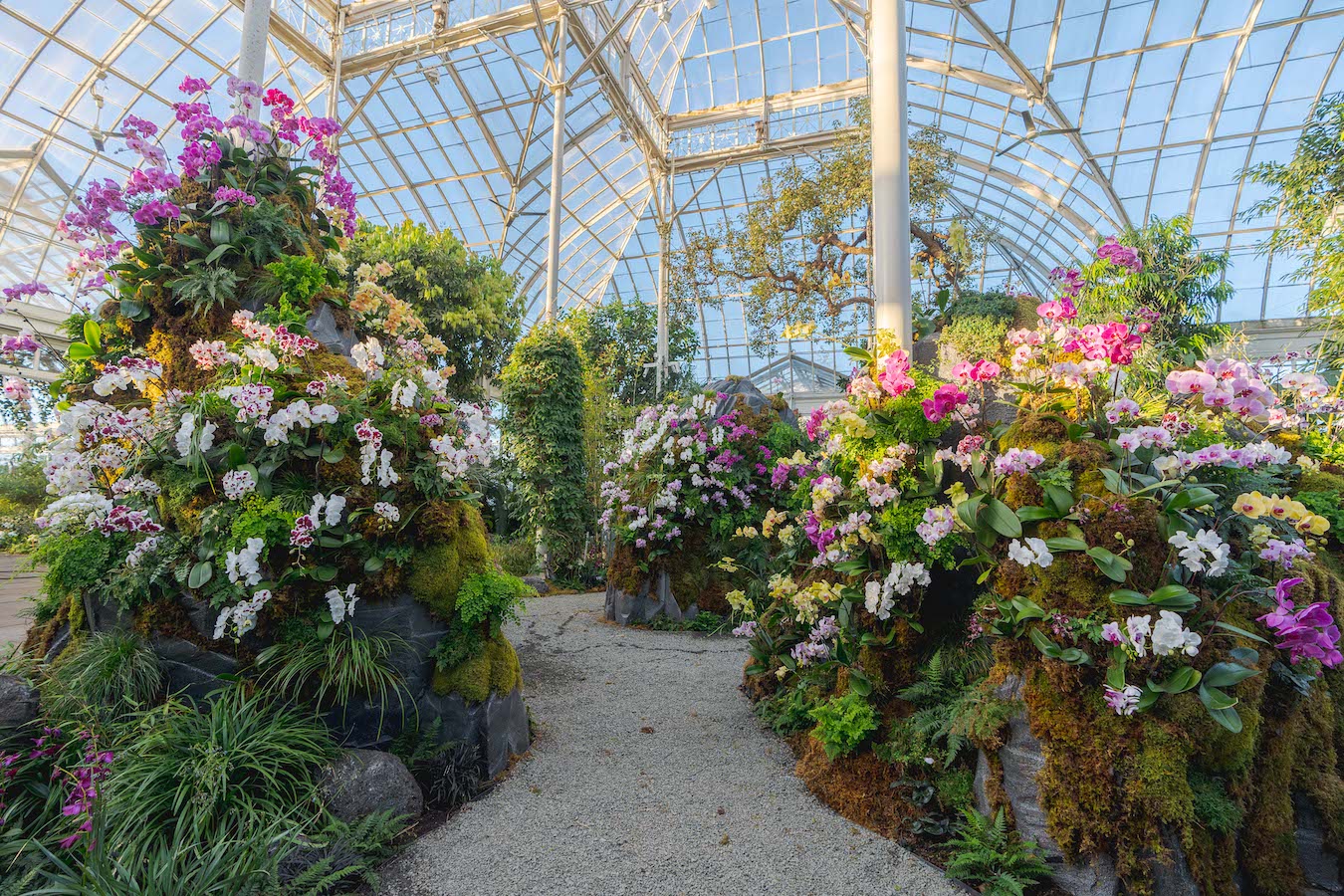 Installation view of “The Orchid Show: Natural Heritage,” courtesy of The New York Botanical Garden.
Installation view of “The Orchid Show: Natural Heritage,” courtesy of The New York Botanical Garden.
WW: At the show’s opening, you spoke about Chinese scrolls that were given to you on your wedding day and helped inform the show. How did what appeared on the scroll inspire “Natural Heritage”?
LK: My grandparents gave my parents these scrolls from Shanghai, which is where my family is from. They hung in my living room my whole childhood. They were the first time I remember using my imagination, getting lost in these huge scrolls. They were the height of our wall and had images of mountains emerging from this seascape in rural China. Being a second-generation immigrant, sometimes your connection to the homeland can feel like something you’re drawn to, but also very distant. It’s in this fantasy world, and you have to use your imagination to get there. They were pieces I was always drawn to, but images I had never seen before. The times I’ve gone to China, I’ve been in places like Shanghai and Beijing. I haven’t really been in that rural environment, so I wanted to build those forms.
I took actual mountain forms and the architecture of the pieces in the scroll, and we built them at scale—15 feet, 18 feet tall. It felt like an incredibly healing, profound experience to bring these things that had only existed in my mind into this tactile reality, and into my present moment. Also, my grandmother’s name in Chinese means “healthy orchid,” and her two sisters also have names that reference orchids. The presence of the divine feminine in my family was very much there. The other aspect of my family narrative that was woven in was my great-grandfather, who was a renowned herbalist and merchant that opened the Australasia trade to herbs. One of the walkways was an homage to him and featured many rare species that have been used in traditional Chinese medicine for a millennia.
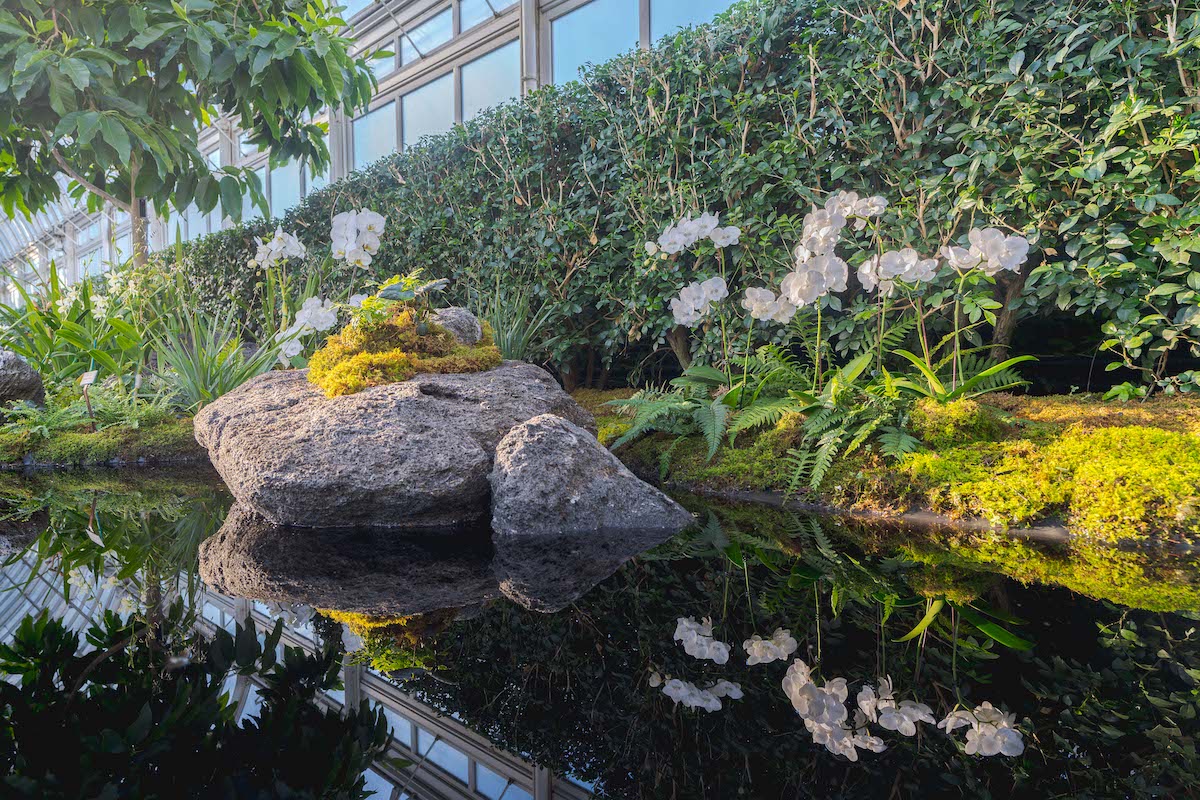 Installation view of “The Orchid Show: Natural Heritage,” courtesy of The New York Botanical Garden.
Installation view of “The Orchid Show: Natural Heritage,” courtesy of The New York Botanical Garden.
WW: You said you hoped the show inspired people to look at their own family histories. How were you envisioning this show to have impact beyond it being a beautiful natural environment?
LK: That’s definitely my biggest prayer for the show. Every single culture, no matter where you come from, has people in its bloodline that had a very profound and deep connection to the natural world, whether it was hunting, gathering, cultivating food, or being able to read the rhythms of the seasons to protect yourself or migrate. You wouldn’t be alive if someone in your family lineage didn’t have that very intimate understanding of the earth and nature and its rhythms, and I think that’s very easily forgotten. We’ve lived out of sync for a much shorter time than we lived in harmony with it, so every culture has beautiful traditions, mythology, and rituals around plants.
Also, every culture depended on plants at one point and we all still do on some level—for food, shelter, medicine. They are pillars of culture, regardless of what continent or country you’re from. I hope we can uncover those ancient ways and wisdom, because unless we start living in harmony with the planet, we are not going to survive the next chapter. It’s very clear that we’re on the brink of climate collapse and we must drastically rethink how we’re functioning as a society, relating to the planet, producing and extracting materials, and how we envision our cities growing and being planned, designed, and developed.
“Every culture depended on plants at one point.”
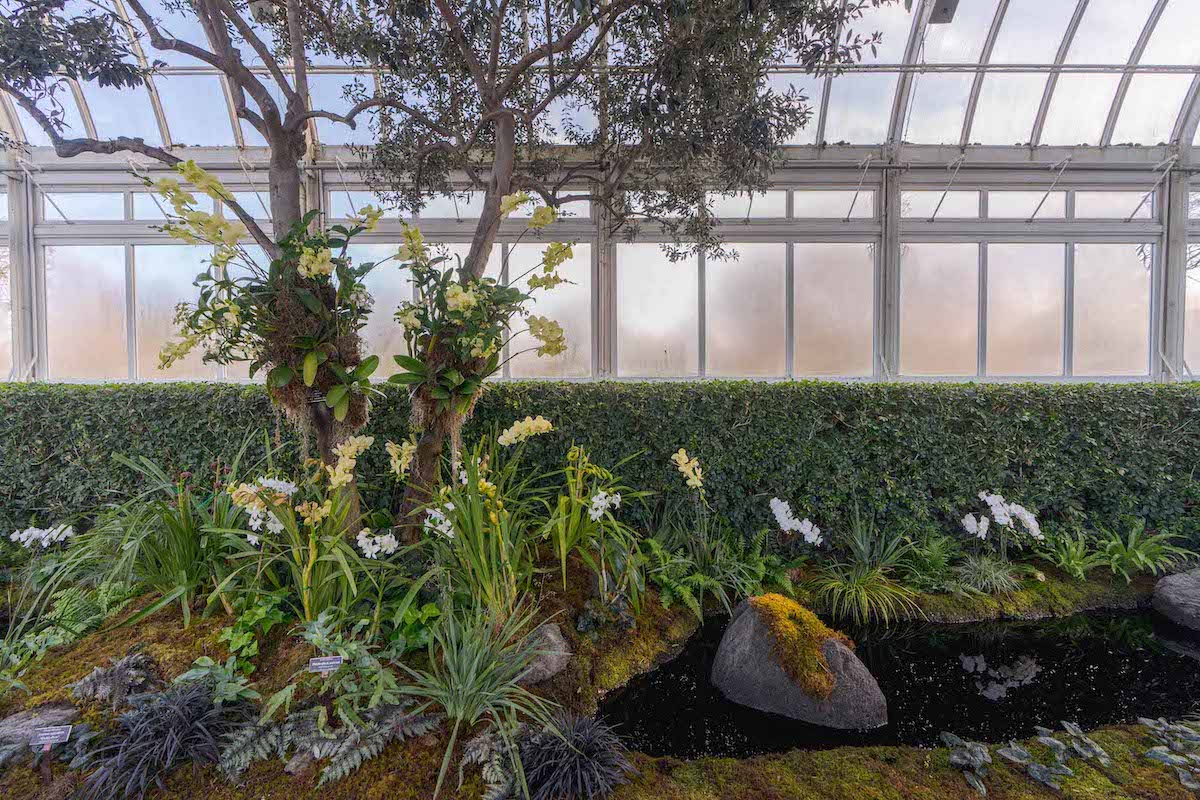 Installation view of “The Orchid Show: Natural Heritage,” courtesy of The New York Botanical Garden.
Installation view of “The Orchid Show: Natural Heritage,” courtesy of The New York Botanical Garden.
WW: When taking on a new project, how are you considering sustainability? Does permanence or nativity play into your approach?
LK: I have been very inspired learning more about native plants and their impact on ecology and environment. When the world went into lockdown, all my public art projects were on hold and suddenly I was starting at my backyard in Los Angeles—that became my project to help keep my sanity. I started designing and working on my own garden, and connected with a plant nursery in L.A. called Theodore Payne that specializes in native plants and conservation. I grew so passionate by this topic that I’m now a board member of theirs.
Eighty-five percent of backyards in America are exotic plants that essentially provide no habitat and limited food and shelter to the insects and fauna that live in those areas. I feel much more of a drive to use native plants at the core of our permanent projects because they provide an enormous amount of habitat, for pollinators and other species of animals, but they also are more resilient again wildfires. They use 80 percent less water; they restore a sense of place. They have all these positive effects on bolstering environmental and ecological health. While the environmental problems are so complex and varied, that’s something I feel is tangible that we can prioritize as a team.







